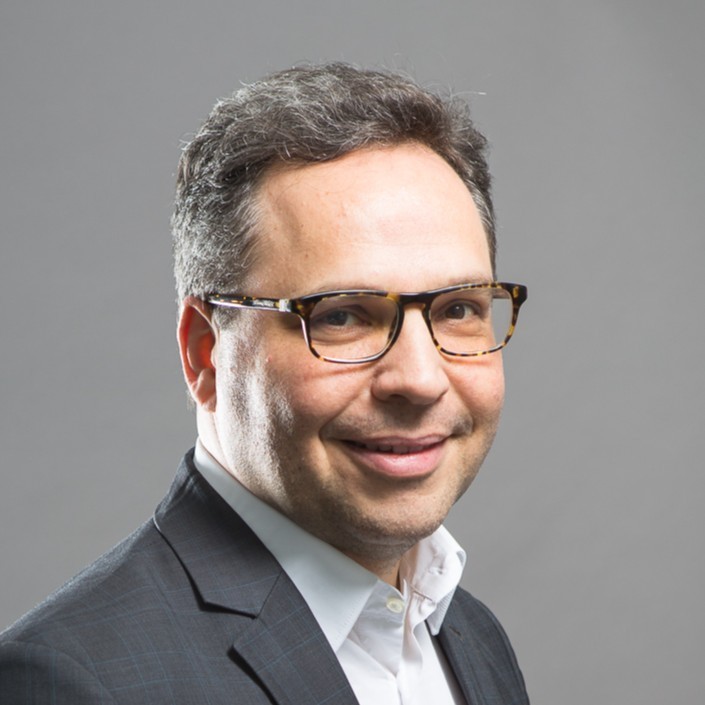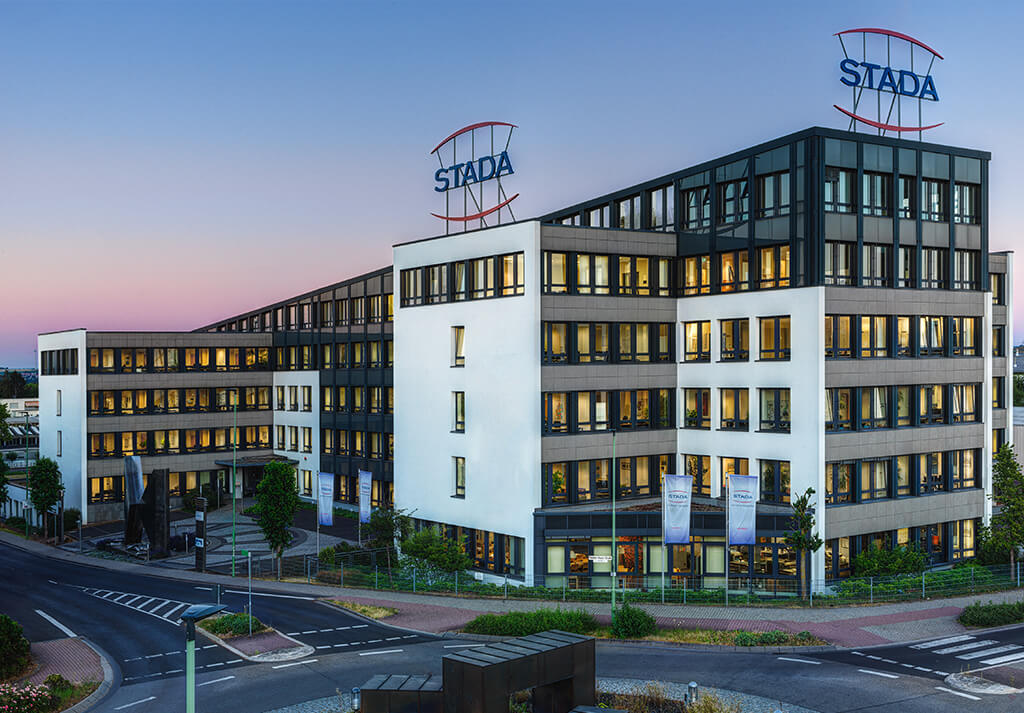Rodrigo Alponti joined STADA as the Head of Global Supply Chain in late 2023, and has implemented a four prong strategy to secure the department’s position as a leading facilitator of company growth. He’s already looking far beyond short-term results, and towards a lasting legacy. This means meeting all 2024 and 2025 targets, while working towards future required capabilities
Hi Rodrigo. I understand you have recently celebrated your one-year anniversary working at STADA. Just as a starting point, how would you summarize the first 12 months and your initial activities as Head of Global Supply Chain.
Indeed, I started in September 2023 and it was clear that robust processes and an optimized organizational structure were instrumental in achieving excellent results up to 2023. However, with anticipated growth and increasing complexity, the need for further evolution of the supply chain was identified. Therefore, we have developed a plan with four axes. All of them have been geared towards repositioning the role of supply chain within the company, ensuring we are an active partner with a seat at the leadership table contributing to success at national, regional and global level. Supply Chain needs to act as a business partner, helping to influence positively the results of the company.
It’s important to remark that all of this has been possible due to the strong 4 core values of the Company, Integrity (Upholding honesty and strong moral principles in all business practices), Agility (Being responsive and adaptable to change, ensuring quick and effective decision making), Entrepreneurship (Encouraging innovation and taking initiative to drive the company forward.), ONE Stada (Fostering unity and collaboration across the organization, emphasizing teamwork and collective success). The culture of the Company drives high agility and strong collaboration, which are fundamental for Supply Chain journey.
Click below and view the brochure version of this content
The best place to start then would be to dive into the first of those four focus areas?
Absolutely, we reviewed the organizational structure, in local, regional and global levels and drove the concept of strengthening the supply chain community, based on an integrated vision and a broad communication. The objective was to drive full integration and nurture the engagement of the team. Every three months we now conduct a webinar with the community to discuss results, our plans, our vision, where we need to improve, and that this links with other areas of the company. But, more importantly, to get their feedback as well, and to really encourage their engagement. This isn’t a random order across the four, either. This focus is number one for a reason. We can’t implement new initiatives or transformation programmes or new technologies and hope for them to succeed if the people are not engaged. Either the implementation won’t work to begin with, or we won’t get the maximum results out of it. This really is the first and most important stage to repositioning Supply Chain.
Am I understanding that the remaining three feed into that primary focus, then?
Yes, although they are also vital in their own rights. The second, to that end, is to eliminate silos and to turn Supply Chain into a true, end to-end entity. In 2023, there were so many silos and much of this first year has been spent removing those and enforcing the sense that we are one team pushing towards one vision. This is a complete alignment with the ‘One STADA’ value of the company where we’re all working together in a collaborative fashion. From there, the third focus is to drive operational performance to new benchmarks and new levels. As part of this pillar, there is a challenging attitude, reviewing all processes and turning them into effective means to reach our vision. Here, we want to see Supply Chain contributing more effectively to the results of the broader company, and to be turned to as a critical function in meeting company targets. Then, last but not least, the fourth focus is on equipping Supply Chain with digital tools that will enhance performance and ensure more efficient ways of doing things. Again, this feeds into the first focus around engagement, as ultimately it is our people who stand to benefit from these technologies, but only if they see a purpose behind them to begin with.

And there we have it: reposition Supply Chain through improved engagement, eliminate silos, drive operational performance for the good of the company, and introduce fit-for-purpose digital tools to elevate that performance even further.
You’re covering aspects of mindset, culture, operations and technology there. What was the situation with Supply Chain function when you first walked through the doors a year ago, as this seems like quite a comprehensive overhaul?
No, there were aspects of this holistic journey that were already underway. The company is always looking for improvement, so certainly focuses two, three and four were already on the agenda. My input has mainly been around the repositioning of Supply Chain and the articulation of all the efforts in a way to make sure those other elements are all being adopted effectively, and that they’re contributing more significantly to STADA as a global organisation. Change isn’t always a welcome concept of course. What has the reception among the team been like to this four-pronged approach? Initially, the first few months were dedicated to assessing the situation. We observed a strong set of processes and an effective organizational structure, yet we also identified opportunities aligned with future needs due to increasing complexity. This prompted us to develop a strategic plan and set priorities. We took a considered approach rather than making immediate changes. Then, as mentioned, the first aspect has been around improving engagement levels. This means forming relationships, not just through the ranks with each person passing down messages to the next report. Rather, we’ve even gone straight to people directly on occasions to really make sure the messages and points are reaching everybody at all levels in the clearest possible way.
“
Working with Camelot has been highly
rewarding. By establishing the right inventory
parameters, optimizing our organizational
structure, and meticulously implementing
our inventory range in the markets, we have
significantly reduced inventory levels while
simultaneously enhancing our service levels.
We developed various methods to connect directly with people, which allowed us to effectively communicate our vision and end-to-end mindset. One approach was to revamp the content and frequency of our webinars. Instead of merely passing messages through team leaders, everyone attends these sessions, ensuring the message remains clear and consistent for all. This represents a cultural shift, demonstrating our commitment to being an end-to-end, collaborative, and united team. This creates the perfect platform for all of the operational goals we have thereafter.
Key Partner & Content Sponsor – Camelot

I’m intrigued by the engagement increase. You’ve discussed its purpose, but how does it play in practical terms, and what kind of actions are you looking to share through them?
This is a crucial point as it forms the foundation for everything else. Adequate processes and new digital tools will only succeed if people are engaged. To enhance engagement, we established three key their purpose and is motivated to work together harmoniously, operational success becomes a natural outcome. Of course, this is a journey, and much more needs to be done. We are just beginning, but the path ahead is promising Delving into the second area, eliminating silos, what was the main bottleneck here when you arrived? I think there was a lot of passing the buck, previously. ‘It’s not my job, so not my problem’. I understand how this happens when every team or department or silo feels so separate. But it really doesn’t help to maximise results. elements. The first focuses on fostering a sense of supply chain community, where the team works toward a shared purpose, integrated across all steps of the chain. The second element ensures close relationships between each team member and their immediate manager, promoting a culture of mutual support and reinforcing the ONE Stada value.
A well-structured relationship shows that the Company genuinely cares for its employees. The third element is providing each team member with meaningful challenges, helping everyone understand their significant contributions to the Company’s success. Recognizing achievements is the fourth element, crucial for motivating the team and energizing them for upcoming challenges. All of this has been made possible by our solid and straightforward STADA values: Integrity, Agility, Entrepreneurship, and ONE Stada. We also restructured our frequent webinars with all collaborators to effectively communicate and ensure the message reaches all supply chain employees. While it sounds simple, it’s vital. When a team understands Again, it has been a cultural and structural shift, where we’ve confirmed that your job has impacts beyond your own perimeter. A big part of every person’s job is to make your colleague’s job as easy and smooth as possible – it’s a shared responsibility. If you’re actively making their work lives harder then it doesn’t matter whether the task is technically your remit or not. You’re simply not doing your job if you’re harming the overall flow.
Of course, we are such a large organisation so this hasn’t been fixed overnight. You have to break down these silos, team by team, plant by plant, region by region. But the stepping stones have been laid and are all pointing in a better direction.
Presumably it’s the same with focus area three, and enhancing operational performance?
Absolutely. Slowly but surely our bar is getting higher and our benchmarks are closer to where we want them to be. And, vitally, as we hit certain milestones or achieve certain efficiencies, these are all fed back during our webinars as examples of where everyone should be striving to get to. We’re rewarding good examples of progress and holding them up as targets for everyone to work towards. Ultimately, we’re already able to point to launches of new or improved products that I can show are a direct result of our new ways of working. This really is the best outcome I can show everyone as it is a direct impact on the company’s profits and success.
So, where does the technology fit in? A lot has been spoken about people and process having to come before technology when embarking on a transformation, but it is presumably still a vital component?
Certainly – I wouldn’t even say it comes last necessarily. Just that it can’t stand alone as something to solve a challenge or an operational bottleneck. It has to be geared towards solving a specific problem that we have identified as a priority. So many companies across different sectors boast about implementing AI or different solutions but if you ask them what problem they were looking to solve with that solution, they can’t tell you. They just don’t want to risk falling behind.

